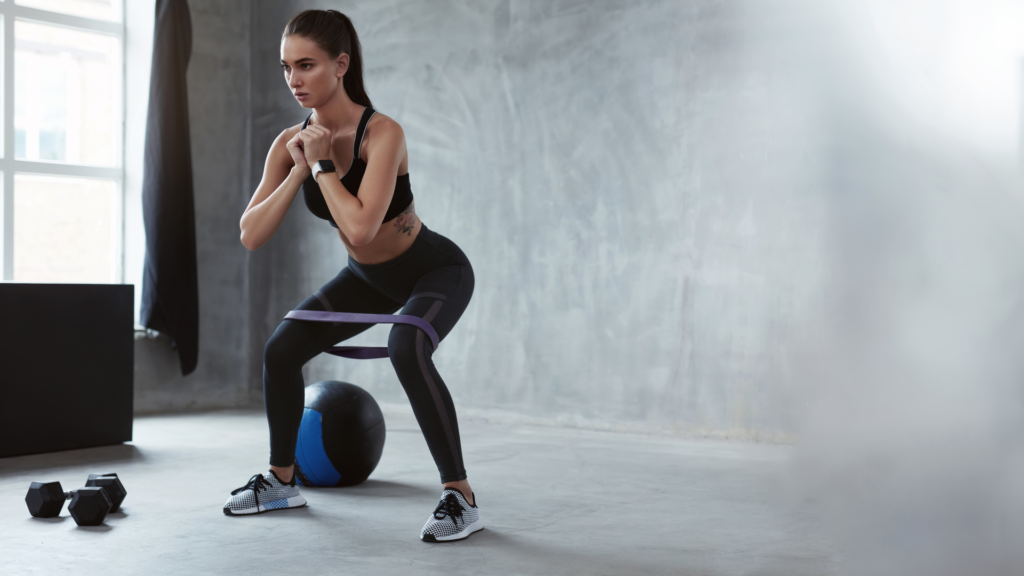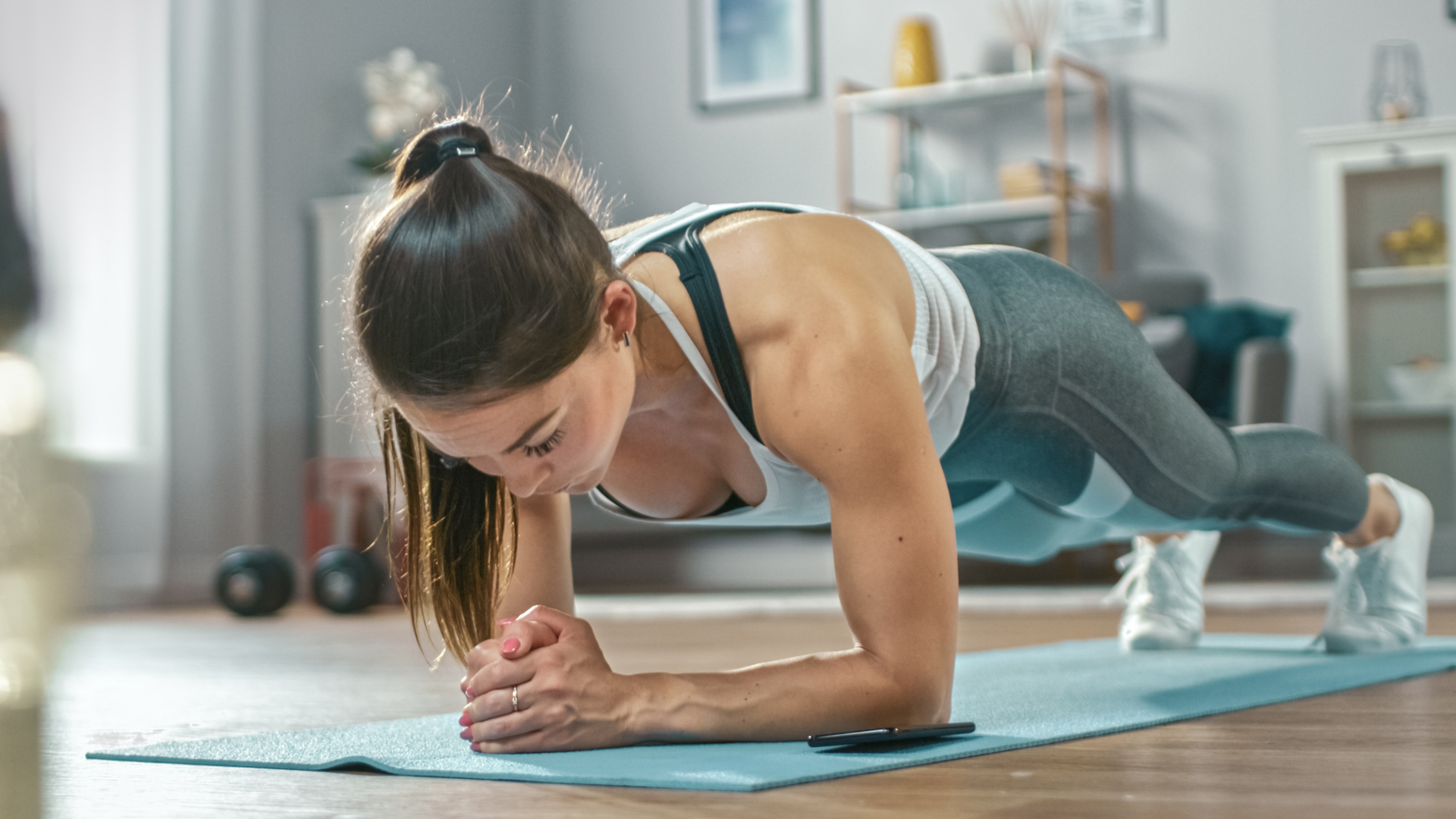Training at home with no or minimal equipment is not equivalent to going to the gym. If you are a professional athlete, training at home can’t be your first choice unless you have a professional home gym with everything you need.
At the gym, we have many more options available: machines, better equipment, and for many athletes, a better and a more competitive environment which in many cases makes you train harder.
What we can do at home, though, with no equipment or just a few resistance bands or dumbbells, is still a lot, and worth it: we can improve our body composition and do our best to preserve the adaptations we worked so hard for in the gym. For those who have more equipment, we can keep on progressing in many different ways.

Nicholas Rubini
If we are on vacation, or in lockdown because of the Coronavirus, home training can still be an incredible resource, if done correctly.
Our muscles do not have eyes to see what we are training with: they only know muscular contractions. The resistance against which exert forces doesn’t matter, as long as the contractions are there: eccentrics, isometrics and concentrics are what the muscles need to be stimulated. The adaptation will occur whether we train at a professional facility under our strength coach, or alone at home with some bands or bodyweight only, if we provide the body with enough stimulus.
For these reasons, it doesn’t really matter if I’m doing push-ups or bench pressing: these two exercises might be different, but if we accumulate the same amount of volume and intensity and if we put enough tension on the pecs, triceps and anterior shoulders, the body will respond to the stimulus.
If you are a very strong powerlifter, for example, simple push-ups might not be enough. But what if we add resistance bands to the exercise? Not enough? We can add a 40 kg weighted vests. Still not enough? You are very strong, but let’s see what you can do if we also add two pauses on the concentric phase, and a 5 seconds eccentric phase. This is just a simple example, but the possibilities are endless with just a few tools: some bands, a weighted vest, and maybe a few kettlebells, macebells (my personal favourite) and some dumbbells.
When resources are limited, as happens when we train at home, we have to remember a few simple concepts:
• The body only knows resistance, not if we are moving a dumbbell, a kettlebell, a band, or anything else
• We need to create tension on the muscle through a dynamic movement to induce adaptation, and we can do so in many different ways
• If we don’t have enough resistance, we need to train closer to muscular failure or true muscular failure and do more repetitions and total volume if hypertrophy is our goal
• We need to increase total volume and possibly frequency, since the intensity (load) isn’t as high as it could be
• Since we can’t progressively overload as well with external load, we can emphasis metabolic stress, one of the key drivers of muscular hypertrophy
Not everyone is a professional athlete: many are only trying to improve their fitness and body composition. For this category of people, training at home is a great option. Maybe you don’t even need a gym, unless you are trying to maximize your full potential.
The other great solution is to build a high-quality home gym, with a power rack, weight plates, a bench, a bar and some other useful things such as resistance bands, kettlebells and more. But for now, let’s focus on all the people that only have their bodyweight or minimal equipment at home.

Key concepts
If this is your case, here are some suggestions for you:
• Metabolic stress, one of the three main drivers of hypertrophy, should become your number one ally if body composition is your goal
• It will be hard to progressively overload your training sessions with load, but you can overload the training volume and density
• The internal focus, for bodybuilders and those looking to improve their physique, should be brought to a higher level
• For athletes, the focus should still be external, based on the outcome and not on how you are “feeling” the muscles
• You can still use a wide variety of exercises to improve high speed movements at low loads or no loads, such as jumping and its multiple variations
• Plyometrics can be done at home with a simple plyo box, a step, or a bench (be careful if you decide to use chairs or tables)
• If you have a garden or some space, short sprints can contribute in building high RFD and should be one of your main focus in training along with jumps of different type
• Play around with different tempo: slow down the eccentrics, use yielding and overcoming isometrics, be explosive in concentric actions
Since you won’t be able to progress load at home as easy as you would at the gym, you can focus on:
• Increasing total volume week after week within a mesocycle
• Shortening the rest periods, increasing density and metabolites accumulation in the muscles
• Increasing training frequency on each body parts or muscles
• Increasing time under tension for hypertrophy purposes
• Making sure to utilize body leverages to increase or decrease the exercise difficulty based on your needs
• Using a lot of unilateral exercises so the load is higher (aside from the fact that unilateral work has great transfer into athletic motor patterns)
• Using circuit training, drop sets, clusters or complexes to make an exercise or a group of exercises harder and to build strength-endurance and power-endurance, and/or for muscular fatigue
Exercises you can do at home
There are many exercises you can do, depending on your needs and goals, such as:
• Goblet squat
• Wall sit
• Bulgarian split squat
• Romanian deadlift
• Leg curl
• Planks and side planks
• Inverted rows
• Hip thrusts
• Lunges
• Jumps
• Bear crawls
• Handstand push-ups
• Throws
• Chin-ups and pull-ups
And many, many more exercises: some may need more equipment than others. You can make them harder with any type of resistance you may have or choose to buy and you can get creative by using whatever you might need: chairs, tables, etc. But please, safety first, always.

Qualities you can improve from home
Maximal strength is probably the most sacrificed quality when we train at home with minimal equipment. If you have a 2.5 bw back squat, no amount of pistol squat will increase your max strength further, sorry.
Max strength is not the only quality athletes need, and we can improve many other qualities such as:
• Body composition
• Endurance
• Tendons intrinsic properties
• Mobility and flexibility
• Hypertrophy
• Motor control and skills
• Aerobic fitness
As you can see, we can get to work even if we are training at home with no equipment.
Conclusions
My intent with this article was to provide you with some useful information regarding training at home with minimal equipment. While not a perfect situation, we can make the most of what we have and use our body as the main source of resistance and modify exercises to make them challenging in many different ways. Having no equipment is therefore not an excuse for athletes: you can and should train multiple fitness qualities even in hard times such as this one (Coronavirus pandemic).
Learn more about our free short course “Setanta Conditioning: A Personal Guide to Fitness and Wellbeing” here, or contact a member of our team below.


Leave A Comment